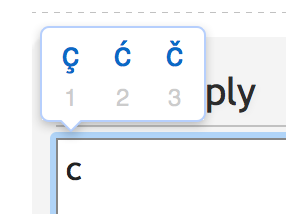I was looking for this, but how exactly is it programmed? Is it through an app that sends the configuration to the keyboard (meaning it's pretty simple to have more than one and send them as needed, but then you're stuck with it on any other machine until you get home)? If so, what OSes can run the app?kbdfr wrote:Note that on Tipro keyboardsMal-2 wrote: […] I guess it's time to look into that Tipro with the extra rows, since that would seem to be the answer.
For those of you who want to investigate and play with this layout:
http://www.keyboard-layout-editor.com/# ... c4bc483e23
What would drive me crazy (at least at first, unless it can reprogram around it): […]
- not only the upper rows, but every single key is programmable, even the spacebar if you like;
- you can program not only text, but also modifiers or chains of keypresses or e.g. Unicode codes on any key;
- there are 4 programming layers, each accessible on a permanent or single keypress basis;
- you can of course use any Cherry MX compatible keycap.
What exactly are the "programming layers"? Base, Fn, Shift+Fn, and Ctrl+Fn?
Why does it seem that the ISO layout has the usual 1/4 U stagger between the QWER row and the ASDF row, while the U.S. layout seems to have a 1/2 U stagger there?
Are there wide third-party keys that can accommodate a 1.5U spacing between switches? This appears to have an oddly shaped 2.5U left shift, or a 1.5U left shift and an unmarked 1U key next to it. Either way I would want to replace it with a normally contoured key.
I suppose 1.5U keys without stabilizers are sufficiently stable, but the 2U keys would be double-switched as best I can tell. Are those commonly available?
For the keys with two switches under them, I suppose the trick would be programming one switch to act and the other to be ignored.








